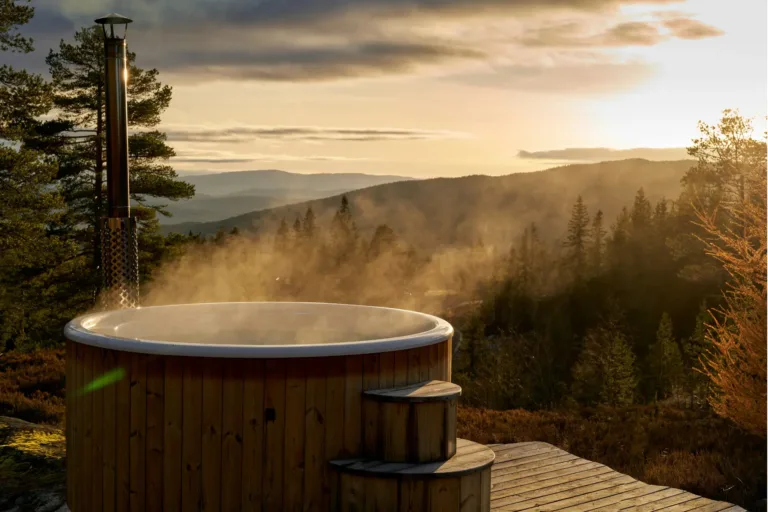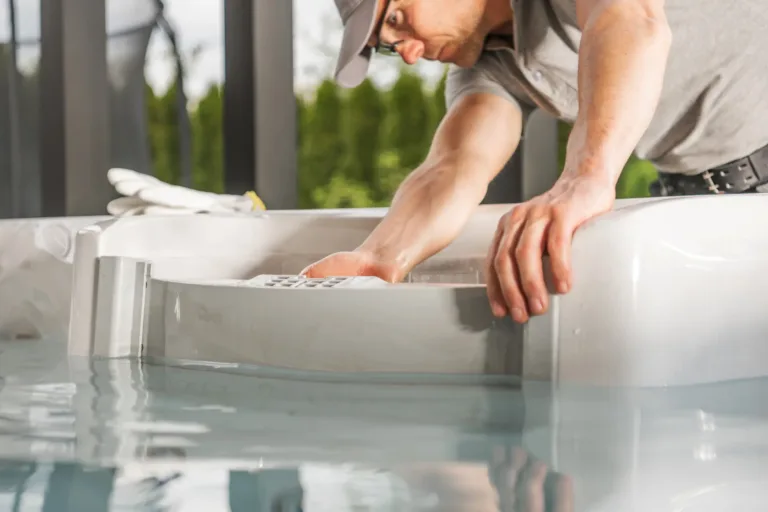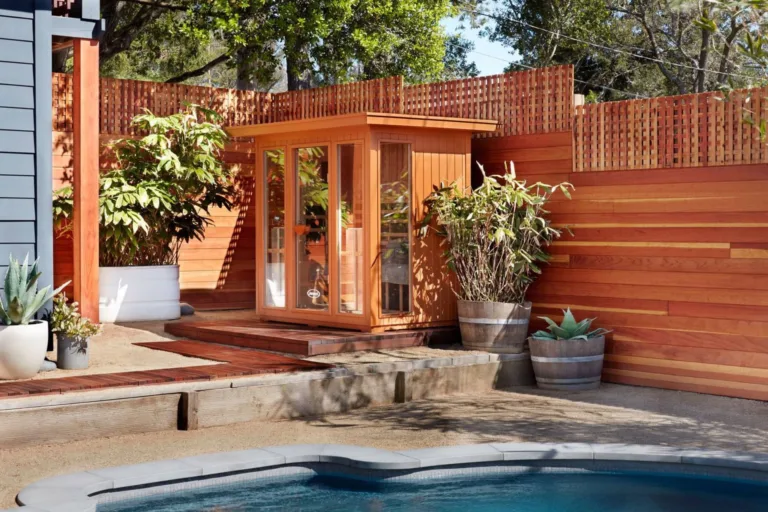Hot tub maintenance isn’t as complicated as you think. Hot tubs are a year-round luxury for relaxation, special events, and physical recovery. With year-round care, reasonable costs, and a few simple tips, you can enjoy your spa experience through every season.
Hot tub maintenance may seem too difficult for some at first, but here’s the truth: modern hot tubs are easier to care for than ever before. With the proper maintenance routine, a little planning for the seasons, and a few smart habits, your hot tub can run efficiently year-round, even in the harshest Canadian winters, without becoming a costly or time-consuming headache.
Use this guide to care for your hot tub through every season. Find out what it costs to maintain one and why owning a spa is far more manageable than most people think.
Are Hot Tubs High Maintenance?
If maintained correctly, hot tubs are not high maintenance. Most of the work comes down to a few small weekly and monthly habits rather than big, complicated chores. However, if they’re never maintained, you’ll likely encounter more complex and expensive issues. Hot tub maintenance is like caring for a smaller, more cost-effective pool.
Here’s what you’ll likely do as a hot tub owner, depending on how frequently you use the hot tub:
- Check and balance the water chemistry once or twice a week
- Rinse the filter weekly and deep-clean it monthly
- Drain and refill the tub every 3 to 4 months
- Keep the cover clean and in good condition
- Schedule an annual check-up for heaters, pumps, and plumbing
That’s it. Establish a routine and, in return, enjoy relaxation, hydrotherapy benefits, and a warm escape from the cold all year round.

Image source: Unsplash
Why Year-Round Care Matters for Canadian Hot Tub Owners
Canada’s extreme seasons require slightly different hot tub maintenance compared to milder climates. Winter temperatures can plunge to -30 °C, or lower, while summers can be hot and humid. Yet we want to be able to enjoy the hot tub year-round.
These swings in temperature affect energy efficiency, water chemistry, and component wear. With a few seasonal adjustments, your spa can thrive in any weather.
Summer Versus Winter Hot Tub Care
This is an essential factor for Canadian homeowners. The weather varies significantly, and so does maintenance.
How to Maintain a Hot Tub in the Summer
Summer care focuses on clean water and preventing overheating. Here’s what you should do during hot months:
- Check the water chemistry twice a week. Heat and UV exposure can affect chemical levels.
- Use a thermal blanket or keep the cover slightly open during heat waves to prevent the water from getting too warm.
- Drain and refill the tub at least once during the summer, especially if your spa sees more frequent use.
- Rinse filters more often to prevent debris, sunscreen, and body oils from building up.
- Do a quick shock treatment after heavy use to keep the water fresh and clear.
How to Maintain a Hot Tub in the Winter
This is when most people love to use their spa. Soaking outdoors in hot water while surrounded by snow is cozy and relaxing. Follow these tips to maintain your tub’s condition:
- Keep the hot tub running. Never shut down your hot tub in freezing temperatures. Water that sits still can freeze and crack pipes or pumps. Drain if you aren’t using the hot tub in the winter.
- Maintain consistent heat. Keeping your water at a steady 37 to 40 °C is more efficient than letting it cool down completely between uses.
- Check your cover regularly. Brush off snow buildup and ensure the seal stays tight to trap heat and prevent freezing.
- Insulate your base. Use foam boards or a rubber mat under the tub to prevent heat loss through the floor if possible.
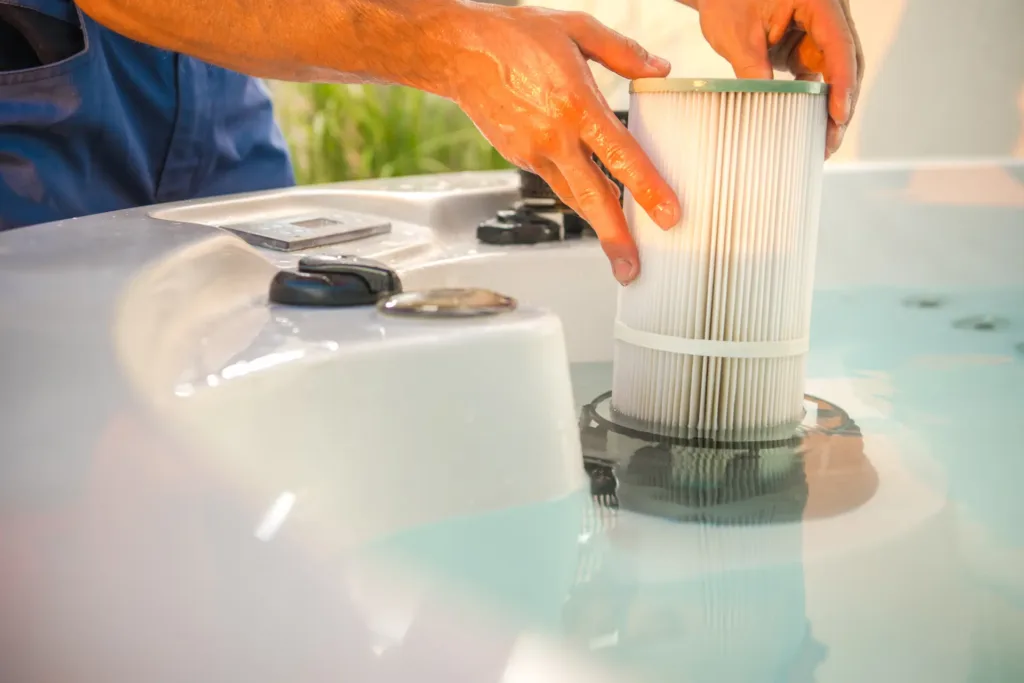
Image source: Canva
The Role of Hot Tub Covers and Insulation
If there’s one part of your spa that deserves special attention, it’s the cover. A high-quality, well-fitted tub cover can drastically reduce heat loss, saving hundreds of dollars in energy costs each year.
Consider the following when upgrading your hot tub covers:
- Thick, tapered insulation foam (4 to 5 inches is ideal)
- A tight, locking seal around the edges (for safety and efficiency)
- Weather-resistant vinyl treated for UV protection
- A centre heat seal to prevent steam escape
If your hot tub cover feels heavy, is sagging, or looks waterlogged, it’s time for a replacement. Old covers absorb moisture and lose insulation power, quickly showing up on your energy bill.
You can also boost efficiency with insulated spa blankets or thermal floating covers, which sit on the water’s surface under the main lid to lock in even more heat.
Average Hot Tub Maintenance Costs in Canada
Hot tub upkeep is more affordable than most people think. You’re looking at roughly $50 to $150 per month, including everything. Here’s a realistic look at the typical annual cost breakdown for Canadian homeowners:
| Expense | Cost | Description |
| Electricity | $20–$100/month ($250–$1,200/year) | This depends on insulation, climate, and frequency of use. Keeping the temperature consistent saves energy. |
| Water and Chemicals | $150–$400/year | This includes sanitizer (chlorine or bromine), pH balancers, shock treatments, and anti-foam. |
| Filter Replacement | $50–$150/year | Most filters last one to two years. A weekly rinse and monthly deep clean extend its life. |
| Cleaning Supplies | $30–$80/year | This includes a cover cleaner, shell wipes, water test kits, etc. |
| Repairs/Service | $100–$500/year (minor) | Possible service to heaters, pumps, or jets. Avoid larger issues with good care. |
| Total Annual Estimate | $600–$1,800/year | Roughly $50–$150 per month for typical use in Canada. |
Practical How-To’s for Routine Maintenance
After a few months, hot tub care becomes routine. Hot tub management falls in line like your weekly laundry load or monthly car cleaning. With routine maintenance, future issues are less likely, and you’ll be able to enjoy your hot tub with peace of mind. Here’s your simplified owner’s checklist to keep everything running smoothly.
1. Hot Tub Water Balancing
Healthy water means healthy hot tubs (and bodies). Check weekly pH levels (7.2–7.8), alkalinity (80–120 ppm), and sanitizer levels.
- If pH is too low: Add a pH increaser to prevent corrosion and itchy skin.
- If pH is too high: Use a pH reducer to stop cloudy water and scale buildup.
- Shock the water once a week or after heavy use to oxidize impurities.
2. Cleaning Hot Tub Filters
Your spa’s first line of defence against dirt and bacteria is your filter. Here’s how to clean hot tub filter parts:
- Weekly: Remove the filter and rinse it.
- Monthly: Soak it overnight in a filter cleaner solution, rinse thoroughly, and let it dry before reinstalling.
- Annually: Replace it or sooner if worn or frayed.
Neglecting filters can cause pumps to work harder and may lead to cloudy water or flow errors. Proper care and maintenance can easily prevent this problem.
3. Preventing Leaks
Sometimes small leaks develop around jets or fittings over time. To prevent this:
- Check plumbing connections and jets each season
- Keep seals lubricated with spa-safe silicone grease
- Avoid overtightening fittings, as this can cause cracks.
- If you spot a leak, don’t panic; most are inexpensive to fix (often $100–$300 for minor repairs), and this is something that falls within the annual hot tub budget.
4. Heater and Pump Checks
Your hot tub heater and pump are the heart of your system. Once every few months:
- Listen for unusual sounds (grinding, humming, or rattling).
- Check for flow errors on the control panel; they usually mean a dirty filter or air in the line.
- Keep air intakes clear of leaves, snow, or debris.
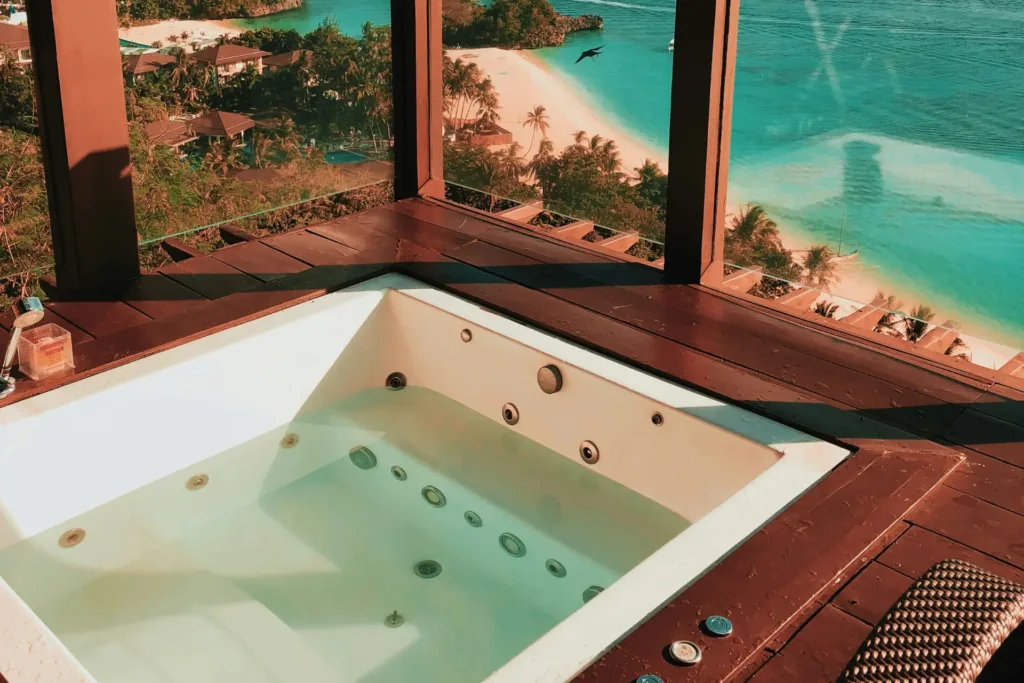
Image source: Unsplash
Repair Basics and When to Call a Technician
Wear and tear happen even with regular care for outdoor hot tubs. Fortunately, most common hot tub issues are straightforward and affordable to fix. Here are common hot tub repair fixes.
Leaks
Worn gaskets, loose jets, or cracked fittings usually cause leaks. When repairing hot tub leaks, identify the source, often visible near pumps or plumbing. Next, tighten fittings or replace gaskets. For stubborn leaks, call a technician to reseal the joint.
Heater Problems
Check the breaker and the GFCI reset button if the water isn’t heating. Clean the filter (blockages can restrict flow). Verify that the water level is adequate. The hot tub heater, pump, and elements can be replaced if all else fails. They’re usually under $300–$600 in parts and labour.
Hot Tub Maintenance Schedule
| Focus Areas | Key Tasks | |
| Winter | Prevent freezing, conserve heat |
|
| Spring | Deep clean & refresh |
|
| Summer | Manage temperature, prevent bacteria |
|
| Fall | Prepare for cold weather |
|
Keeping Hot Tub Costs Down: Smart Canadian Tips
Enjoying your tub doesn’t have to cost a pretty penny. Here are smart ways to keep your hot tub costs to a minimum:
- Invest in insulation early. Models with full-foam insulation and well-sealed cabinets use far less electricity.
- Use off-peak power hours. In provinces like Ontario, hydro rates drop at night. Set your tub to heat and filter during off-peak times.
- Maintain the cover. Clean it regularly with mild soap, apply UV protectant, and replace it when it loses rigidity.
- Keep water chemistry balanced. Improper chemistry can corrode parts and shorten the heater’s lifespan.
- Avoid overdraining in winter. If you need to refresh water before the temperature drops to extreme cold. Never leave pipes empty in freezing temperatures.
- Use a floating thermal blanket. This cuts evaporation and heat loss, especially overnight.
- Watch for minor issues early. A tiny leak or pump noise is cheaper to fix today than after months of strain.
The Big Picture: Hot Tubs are Manageable Investments
A well-maintained hot tub isn’t a burden, but a lifestyle upgrade that pays off in comfort, health, and home value. Plus, modern spa systems feature:
- Energy-efficient heaters and circulation pumps
- Smart filtration cycles
- Freeze protection modes
- Self-diagnosing control panels
These advancements make hot tubs easier to care for than ever before.
Quick Hot Tub Maintenance Reference
| Weekly | Monthly | Quarterly: | Annually: |
| – Test water balance – Add sanitizer/shock as needed – Rinse filters – Wipe cover and waterline |
– Deep-clean filters – Check jets, pumps, and cover – Shock treat and top up water |
– Drain, clean, and refill – Flush plumbing lines |
– Replace filters – Inspect heater, pumps, wiring – Service professionally if needed |
Stick to this checklist and your spa will stay clean, efficient, and ready to enjoy, twelve months a year.
Key Takeaways
- Hot tubs aren’t high maintenance. Consistent weekly and monthly habits are all you need.
- Year-round care is essential in Canada’s changing seasons to prevent freezing, overheating, and wear and tear.
- Average hot tub maintenance costs range from $600–$1,800 per year or about $50–$150 monthly.
- Covers and insulation are crucial for efficiency. Replace worn covers to save on energy bills.
- Routine water care (balancing, shocking, and filtering) keeps water clean and prevents equipment strain.
- Prevent leaks and heater issues early. Minor fixes cost far less than delayed repairs.
- Use seasonal best practices: insulate in winter, prevent overheating in summer, and deep clean in spring/fall.
- Energy-saving habits like off-peak heating and proper insulation help reduce long-term costs.
- Modern hot tubs are designed for easy maintenance with features like smart filtration and freeze protection.
FAQ
Are hot tubs high maintenance?
Not at all. Modern hot tubs are easier to maintain than most people think. With a simple routine (checking water chemistry, cleaning filters, and keeping the cover), upkeep becomes quick and predictable.
How much does it cost to maintain a hot tub in Canada?
Expect to spend around $50–$150 monthly on electricity, chemicals, filters, and minor repairs. Well-insulated models and consistent maintenance can keep costs on the lower end of that range.
How often should I drain and clean my hot tub?
Typically every 3-4 months. Draining and refilling helps remove buildup and keep water fresh. Combine this with a deep filter clean and plumbing flush for optimal performance year-round.
Enjoy Year-Round Luxury with Wellness Shop Hot Tubs
Canadian winters can be harsh, but caring for a hot tub is simple. With routine care, smart insulation, and a reliable cover, your spa will stay warm, safe, and inviting through snowstorms, heat waves, and everything in between.
Nail hot tub maintenance and start your wellness journey. Browse our selection of hot tubs today.

